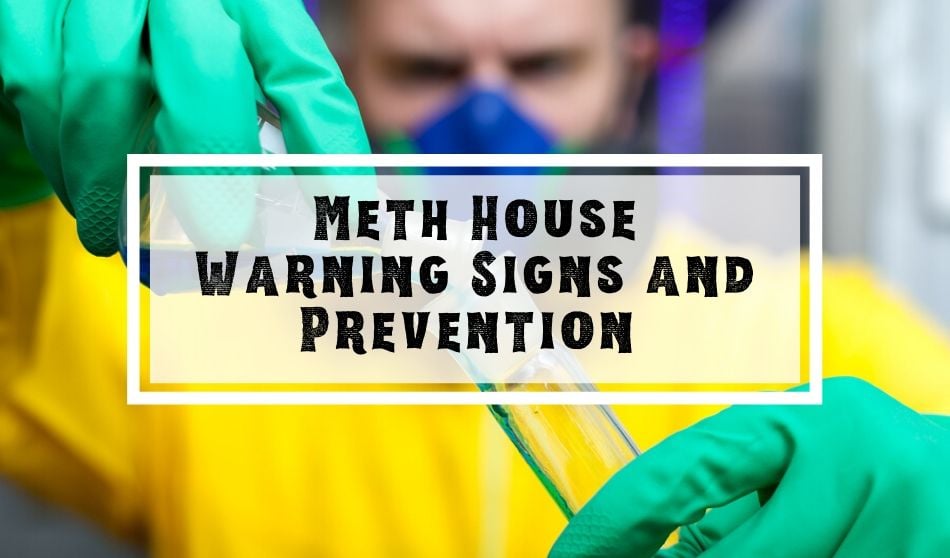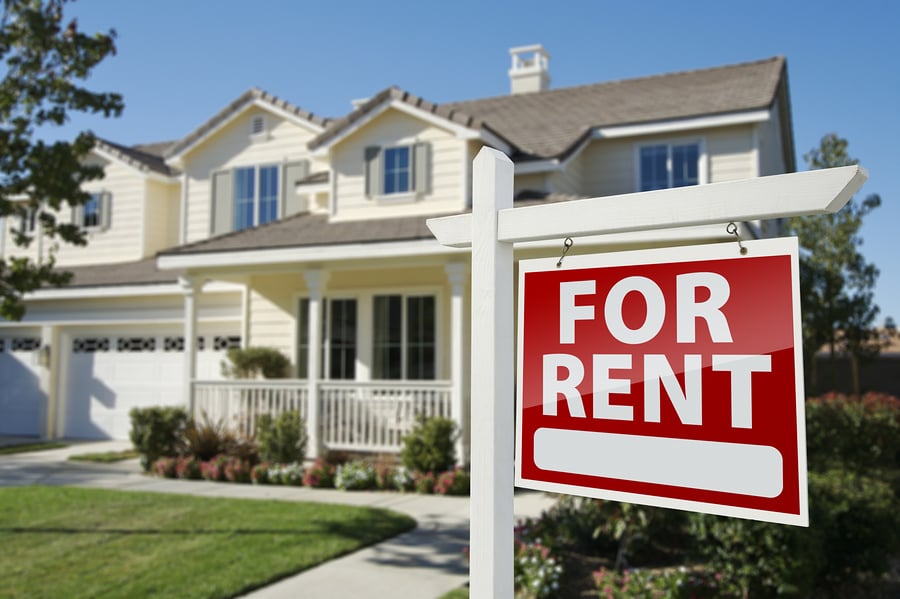
A study in 2019 shows meth use increased six-fold since 2013. Meth is typically cooked in home labs and on stovetops for local distribution. The increase of use correlates to an increase in home production. Know the meth house warning signs, understand your responsibilities as a housing provider, and be proactive in prevention to keep meth from destroying lives and your livelihood.
Meth use, manufacturing, and distribution are illegal in the United States. As a housing provider, it is your responsibility to prohibit illegal activity from taking place on your property. You are also responsible for the safety of your property and that of your tenants.
Meth House Warning Signs
How do you know if your rental property has turned into a meth house? When should you contact your local drug task force?
There are telltale meth house warning signs and precursors that nefarious activity might be brewing.
Changes in Behavior
Often one if not many of the offending meth lab operators are also users. If not the operator then friends, family, or other occupants may well be. Changes in behavior may be a big indicator.
Signs of methamphetamine use include extreme dental issues, weight loss, itching, anxiety, memory loss, violent behavior, paranoia, hyperactivity, and hallucinations.
Property Changes
Drug activity of any kind including meth, whether use, creation, or processing often will take its toll on the property. Specifically, in trying to suss out if a meth house has sprung up, look for the following.
- Hoses hanging from the windows (used to ventilate the house) and other modifications to ventilation.
- New security system installed without your permission.
- Excessive signs such as no trespassing, private property/beware of dog signs.
- Above normal amount of garbage:
- Garbage and clutter about the property.
- Increase in garbage service/number or size of bins.
- Complaints or observation that occupant is putting garbage in neighbors containers.
- An unusual amount of trips to a shared dumpster.
- Newly covered or blackened windows
- Signs of external property neglect such as dead grass from chem dumps and stained soil or concrete.
Suspicious Signs and Activity
In addition to changes in behavior and property status, look out for the following suspicious signs and activities.
- Complaints of strong odor by neighbors or unusual chemical, almost sweet odors during inspections.
- Frequent, short stay, and odd hour visitor traffic.
- Increased utility usage.
- Interaction with unknown persons/occupants other than the tenant who signed the lease.
- Empty chemical containers and odd or bulk items such as paint thinner, lye, freon, acetone, iodine, hydrogen peroxide, sulfuric acid, phosphoric acid, and ammonia.
- Unusual items of quantity such as rubber hoses, duct table, bottles and containers, pressurized cylinders, camp stoves, fuel containers, propane tanks, and respiratory masks.
- Large amounts of cat litter in a pet-free property or property with few cats.
Additional meth use and production signs and information can be found here: National Institue on Drug Abuse | Methamphetamine
Prevention
There is truth in the Benjamin Franklin axiom, ‘an ounce of prevention is worth a pound of cure’. But in the case of dealing with a meth lab in your rental, it’s worth far more than a pound. Crime prevention goes hand-in-hand with the landlord responsibilities and this list should help you combat the establishment of a meth lab in one of your rental properties.
Conduct Rigorous Tenant Screening
- Insist that all potential occupants over 18 fill out the rental application.
- Have each potential occupant sign an agreement to allow you to conduct a background investigation and pull credit reports.
- Conduct a full criminal background check to include pulling criminal and eviction reports.
- Call all rental references for every occupant.
Educate Throughout the Rental Process and Tenancy
A watched pot never boils as the saying goes. Educate all prospective and new occupants of your involvement with the community and rental. Tenants are less likely to participate in illegal activities if they feel they will be easily discovered. This also will deter potential tenants from choosing your rental property. A good tenant will feel protected by your security measures, a nefarious one will avoid renting from you.
- Talk about your security measures.
- Participate or encourage participation in a Neighborhood Watch program.
- Conduct drive-by inspections and let your tenants know that they are random.
- Create and discuss inspection schedules and notification requirements.
- Let them know you have regular contact with neighbors and/or other tenants.
- Inform them if you keep records of unauthorized vehicles.
Observe and Document Changes in Behavior, Property, and Neighborhood
With property notice, conduct thorough inspections. Remember to check all rooms, especially sheds, garages, or other out-buildings. Look for changes to wiring or utilities. If you have suspicions prior to an inspection call your local drug task force to ask them how to proceed.
Get to know the neighbors and leave a business card asking for calls if anything is suspicious or bothersome. Let them know you are the owner and that the home is a rental property.
Use observational skills during routine maintenance issues or repairs. Tag along with any vendor/contractor you send to the property. Meet repair vendors at the home to oversee repairs, pay vendors, but also to get an eye for anything suspicious.
Document each complaint, every late payment, each police report, and every observation; especially during inspections. This documentation may prove vital in helping remove a tenant engaged in illegal activity.
Report to Authorities
For your safety, never confront tenants about illegal activity alone. Instead, report to the authorities your suspicions. Reach out to your local drug task force for assistance.
Stack the Odds in Your Favor Against a Meth House Developing
Know the signs and take proactive prevention steps to fulfill your landlord responsibilities to protect your assets and their surrounding communities. These steps will not only benefit your rental portfolio bottom line but also save lives from lethal substance abuse.
More resources for education and prevention can be found here: United States Drug Enforcement Administration (DEA) Education and Prevention
If you or someone you know is struggling with drug addiction please contact the Substance Abuse and Mental Health Services Administration (SAMHSA) National Helpline for free, confidential referral and information service available every day, every hour at 800-662-HELP(4357).
RELATED READING FOR YOU:
- The Ultimate Guide to Tenant Screening for Landlords
- Crime Prevention Resources for Rental Properties
- An Inside Look at Squatter’s Rights






I think she is off the mark by a mile on what to look for by her assessment my property looks like a “Drug House” No one in my house is or ever was on drugs. I can’t be in the heat and my children are disabled. And Our health has gotten worse since neighbors moved in. They fenced. off the yard in 24 hrs at least 50,000 dollars in fence stripped out all the trees maid the house look like the Norman Rockwell’s moved in with their large and loud dog. flood lights and surveillance I started getting mail with the names of drug dealers show up in my mailbox. They were gone at least 3 weeks and everyone in my house stopped feeling sick with in 24 hrs. of them coming back everyone in my house was sick again. They don’t take trash to the street they burn it. they put in a fireplace. When not allowed as a source of heat here? They know what people assume a drug house looks like Just read it here. They have adapted to the assumption. to avoid suspicion
Hi Sophia,
Yes, there are certainly instances when these indicators don’t tell the full picture. Simply judging a book by its cover is never reliable, but these are warning flags that when coupled together may indicate an issue.